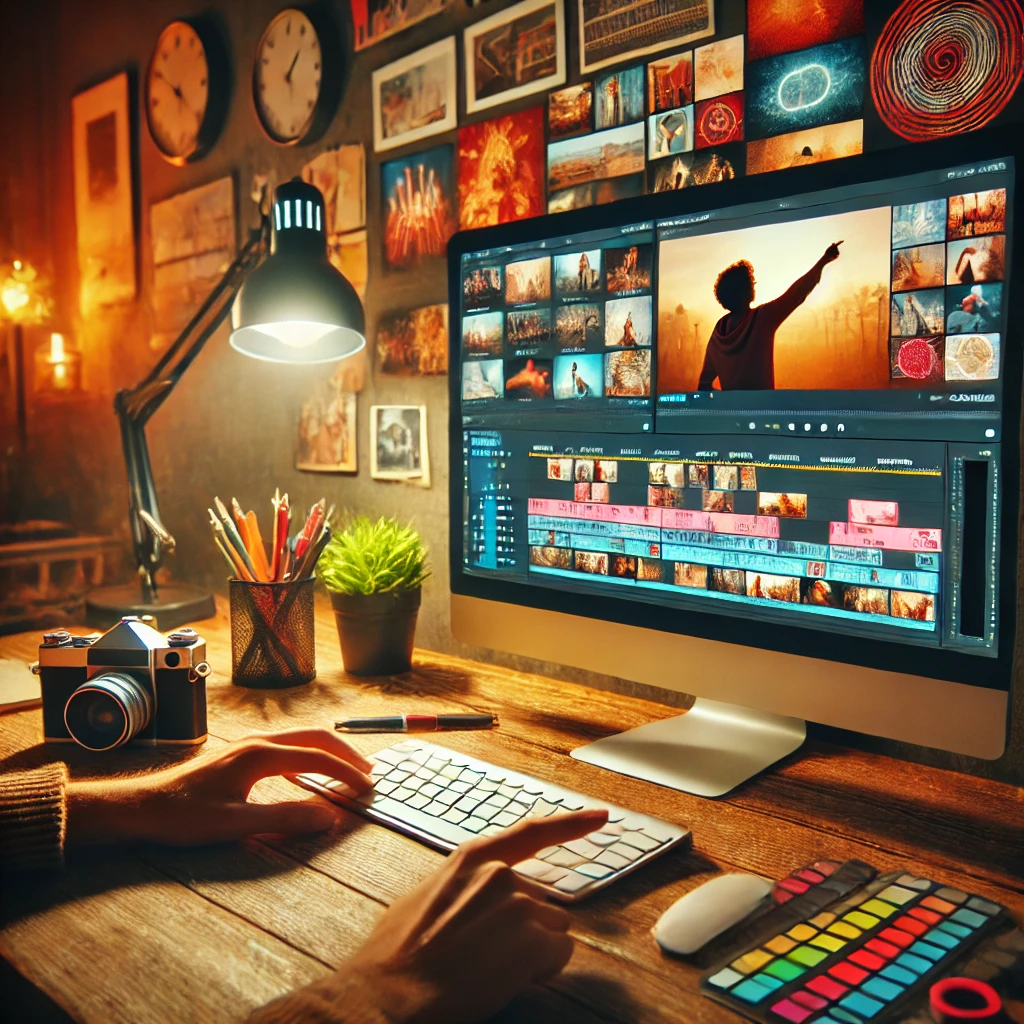The digital era has made content creation accessible to everyone. One of the most exciting ways to repurpose your images is by turning them into videos. Whether you want to create a slideshow, a promotional video, or an engaging social media post, transforming pictures into videos can enhance your storytelling and attract a larger audience. This article will guide you through the process of making a video from any picture and provide insights into tools, techniques, and tips for creating stunning visuals.
Why Make a Video from Pictures?
Turning pictures into videos offers several advantages:
- Enhanced Engagement: Videos are more engaging than static images. They can capture your audience’s attention and convey a message effectively.
- Storytelling: Videos allow you to tell a story with multiple images, music, and text.
- Versatility: From personal photo albums to professional presentations, videos have a wide range of applications.
- SEO Benefits: Video content ranks higher on search engines, driving more traffic to your website or social media profile.
Steps to Create a Video from Pictures
Follow these steps to turn your pictures into an engaging video:
- Choose the Right Tool
- There are many tools available for creating videos from pictures. Popular ones include:
- Adobe Premiere Pro: A professional video editing software with advanced features.
- Canva: A user-friendly platform with templates for quick video creation.
- iMovie (for Mac users): Ideal for beginners with an intuitive interface.
- Animoto: Designed specifically for creating slideshows and short videos.
- There are many tools available for creating videos from pictures. Popular ones include:
- Collect Your Pictures
- Select high-quality images that align with the purpose of your video.
- Organize the pictures in the desired sequence.
- Add Music and Effects
- Choose a background track that complements your video’s theme.
- Use transitions, text overlays, and animations to enhance visual appeal.
- Edit and Fine-Tune
- Adjust the timing of each picture to sync with the music and narration.
- Use filters and color correction for a polished look.
- Export and Share
- Save the video in the appropriate format (e.g., MP4, MOV).
- Share it on social media platforms, websites, or presentations.
Best Practices for Creating Videos from Pictures
- Keep It Short and Sweet: Most viewers prefer videos under 2 minutes.
- Focus on Quality: Use high-resolution images to avoid pixelation.
- Tell a Story: Arrange pictures in a sequence that conveys a clear narrative.
- Optimize for SEO: Include keywords in the video title, description, and tags.
- Add Captions: Captions make your video accessible to a broader audience.
Recommended Tools for Beginners
If you’re new to video creation, here are some beginner-friendly tools:
- Canva: Offers pre-designed templates for creating stunning videos quickly.
- Kapwing: A free online tool with drag-and-drop functionality.
- Adobe Spark: Simplifies video creation with easy-to-use features.
Advanced Techniques for Professionals
For those with experience in video editing, consider these advanced techniques:
- Layering: Combine pictures with videos and animations for a dynamic effect.
- 3D Effects: Use software like Blender for three-dimensional visuals.
- Custom Transitions: Design unique transitions to stand out.
SEO Optimization for Video Content
To ensure your video reaches a wider audience, follow these SEO tips:
- Title: Use a keyword-rich title like “How to Make a Video from Any Picture.”
- Description: Write a detailed description with relevant keywords.
- Tags: Include tags such as “picture to video,” “slideshow creation,” and “video editing tips.”
- Thumbnail: Design an eye-catching thumbnail to increase click-through rates.
- Embed on Websites: Host the video on your website and optimize the page for search engines.
Creative Use Cases for Picture-to-Video Transformation
- Social Media Content: Create eye-catching slideshows to share your brand’s story or showcase products.
- Personal Memories: Compile photos from special events like weddings, birthdays, or vacations into a memorable video.
- Educational Videos: Use images to explain concepts, create timelines, or deliver tutorials.
- Marketing and Advertising: Design promotional videos to highlight services or product features.
- Portfolio Showcase: Create a dynamic video showcasing your work as a designer, photographer, or artist.
Tips to Make Your Video Stand Out
- Personalization: Tailor the video to your audience’s preferences and interests.
- Consistency: Maintain a cohesive style, such as color schemes and font choices.
- Call-to-Action (CTA): Add a clear CTA at the end of your video to encourage viewers to take action.
- Visual Effects: Experiment with slow motion, zoom-ins, and text animations to add depth.
- Use Templates: Many tools offer pre-designed templates that can save time and ensure a professional finish.
Common Mistakes to Avoid
- Overloading with Effects: Too many transitions and animations can distract from the core message.
- Low-Quality Images: Blurry or pixelated pictures reduce the video’s overall impact.
- Ignoring Audio Quality: Poor-quality music or narration can detract from the viewer’s experience.
- Lack of Planning: Skipping a storyboard can lead to a disorganized final product.
The Future of Picture-to-Video Tools
As technology evolves, picture-to-video tools are becoming increasingly advanced. Features like artificial intelligence and machine learning are enabling:
- Automated Storyboarding: AI can organize images into a narrative sequence.
- Smart Filters: Tools can suggest enhancements based on the image content.
- Voice Integration: Add AI-generated or recorded narrations easily.
- Real-Time Collaboration: Work with team members simultaneously on the same project.
Final Thoughts
Creating a video from pictures is a rewarding experience that combines creativity and technology. With the right tools and techniques, you can transform simple images into captivating videos that leave a lasting impression. Start experimenting today and unlock the potential of your visual content. Whether for personal use or professional projects, the possibilities are endless when you turn pictures into videos.

